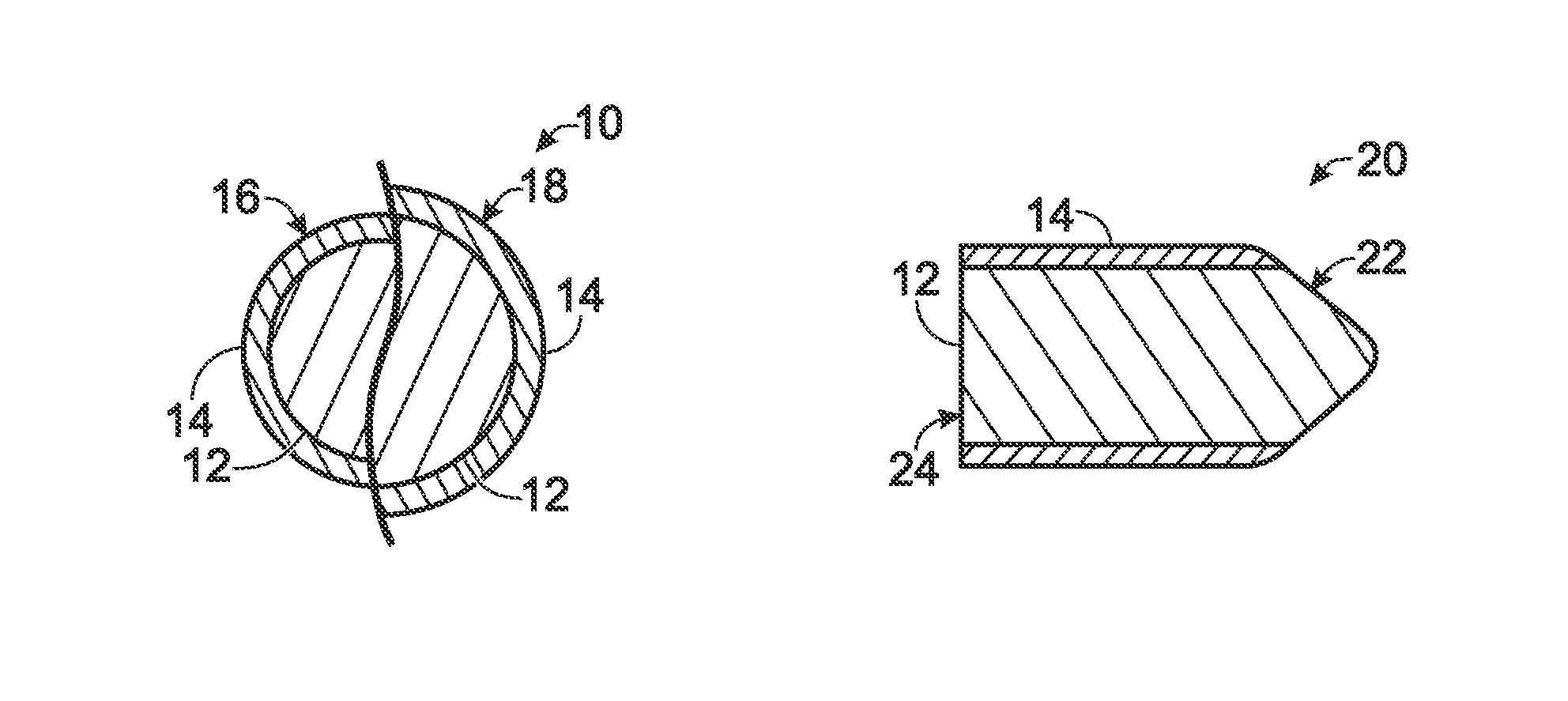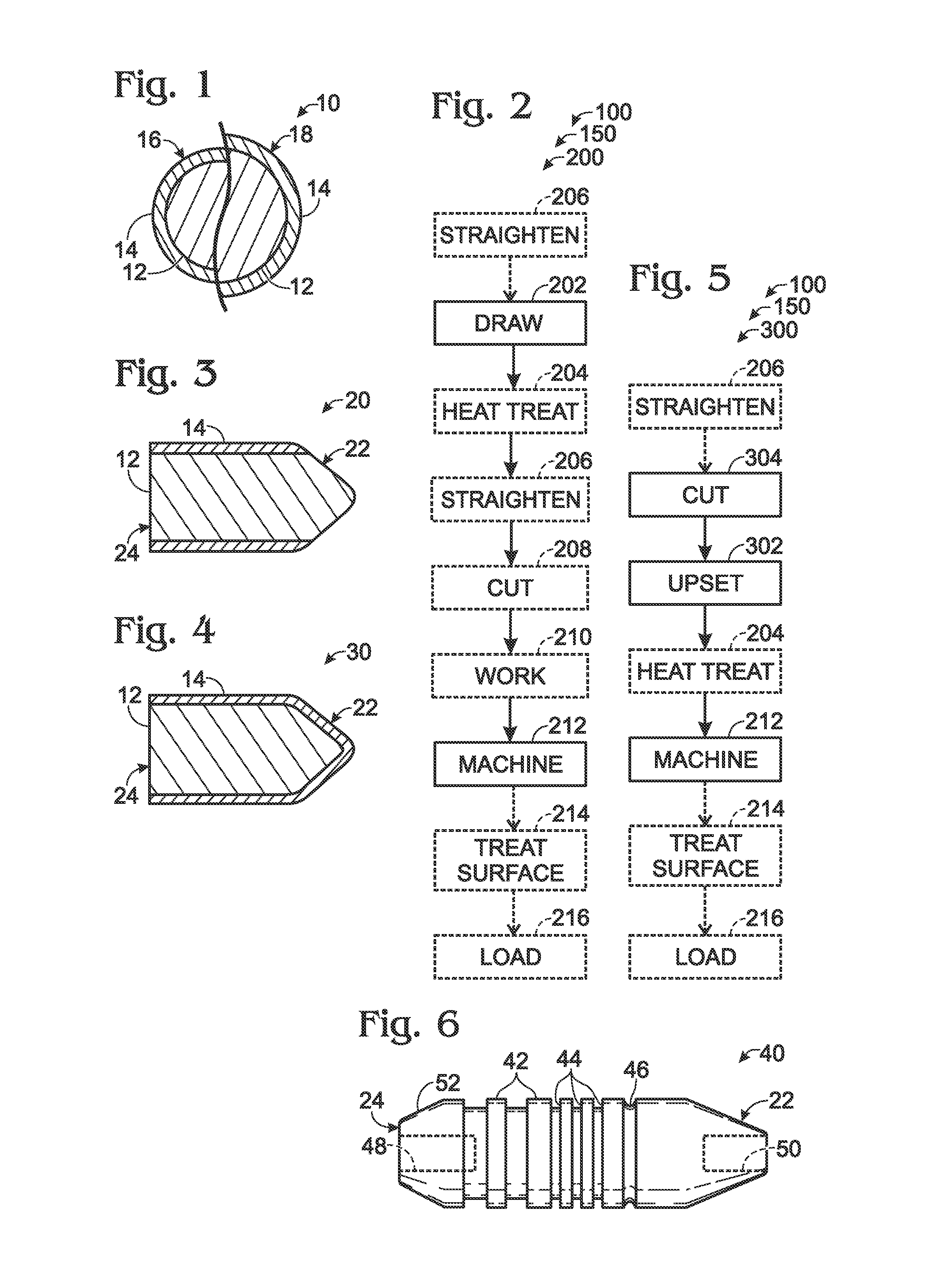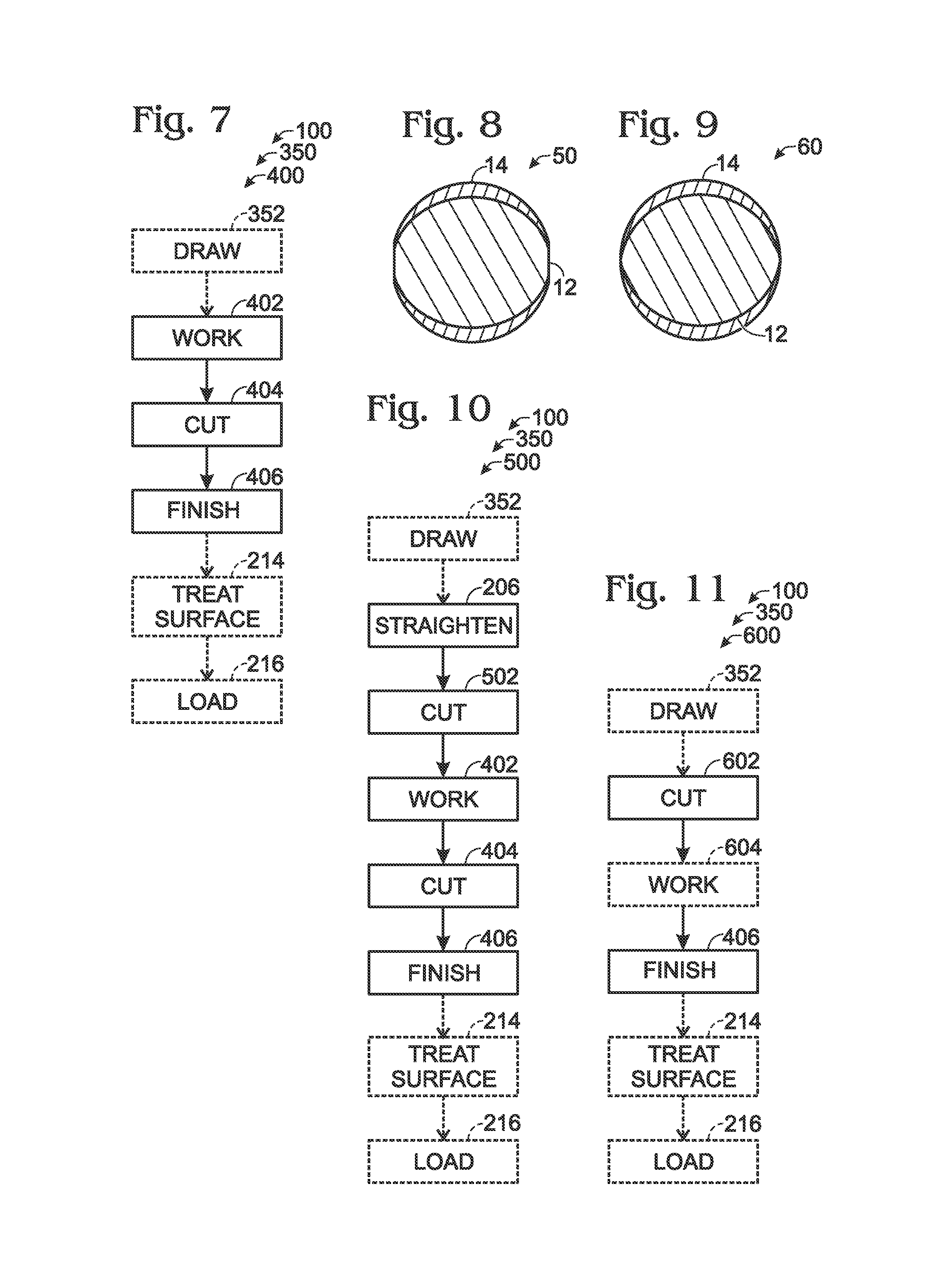Firearm projectiles and cartridges and methods of manufacturing the same
a technology of projectiles and cartridges, which is applied in the field of ammunition for firearms, can solve the problems of unsatisfactory hunting effect, unfavorable human health, and voluntary restriction of the use of lead bullets
- Summary
- Abstract
- Description
- Claims
- Application Information
AI Technical Summary
Benefits of technology
Problems solved by technology
Method used
Image
Examples
Embodiment Construction
[0034]The present disclosure relates both to firearm projectiles, such as bullets and shot, as well as to methods for forming, or manufacturing, firearm projectiles. More specifically, projectiles according to the present disclosure are formed from, and methods according to the present disclosure utilize, clad wire.
[0035]As used herein, “clad wire” refers to a composite, bimetallic wire having an inner core of a first metal surrounded by an outer layer, or cladding, of a second metal that is bonded to the inner core and that is different than the inner core. FIG. 1 schematically illustrates two cross-sectional representations of clad wire 10, including an inner core 12 and an outer layer, or cladding, 14.
[0036]Illustrative, non-exclusive examples of clad wire include (but are not limited to) steel clad wire (i.e., wire with a steel inner core 12 and a non-steel cladding 14). Illustrative, non-exclusive examples of steel clad wire include (but are not limited to) copper-clad steel wi...
PUM
| Property | Measurement | Unit |
|---|---|---|
| density | aaaaa | aaaaa |
| diameter | aaaaa | aaaaa |
| diameter | aaaaa | aaaaa |
Abstract
Description
Claims
Application Information
 Login to View More
Login to View More - R&D
- Intellectual Property
- Life Sciences
- Materials
- Tech Scout
- Unparalleled Data Quality
- Higher Quality Content
- 60% Fewer Hallucinations
Browse by: Latest US Patents, China's latest patents, Technical Efficacy Thesaurus, Application Domain, Technology Topic, Popular Technical Reports.
© 2025 PatSnap. All rights reserved.Legal|Privacy policy|Modern Slavery Act Transparency Statement|Sitemap|About US| Contact US: help@patsnap.com



